It’s Time to Stop Profiteering at the Pump
Lindsay Owens and Hebah Kassem / CounterPunch
(May 20, 2022) — Amid the ongoing atrocities in Ukraine, rising gas prices, and the existential threat of climate change, policymakers in Washington have a long list of crises to address. But there’s one step that could help mitigate all of them: reducing our dependence on oil — and the giant oil and gas companies who profit from it.
For decades, we’ve allowed big oil and gas companies to enrich themselves at the expense of our families, communities, and environment.
Now these companies are seizing a moment of geopolitical unrest to pad their pockets even more. Oil companies are celebrating some of their biggest profits in years. In the first three months of 2022 alone, ExxonMobil raked in a record $5.5 billion, ConocoPhillips $5.8 billion, and Chevron $6 billion.
On quarterly earnings calls with their shareholders, big oil CEOs can’t stop bragging about how the crisis in the Ukraine is a great excuse to keep prices high and bring in historic profits — while consumers literally pay the price.
Just listen to the CEO of Texas-based Pioneer Oil. When a reporter asked the CEO whether the company would consider taking measures to reduce prices after Russia’s invasion of Ukraine, he replied: “No.”
Why? He explained: “It’s all about the shareholders. Our shareholders own this company. They want a return of cash.”
Pioneer Oil isn’t the only one: 59 percent of oil and gas executives recently told the Dallas Fed that “investor pressure to maintain capital discipline” — i.e., to keep profits soaring — is the primary reason publicly traded oil companies are throttling supply despite high prices.
If you think these CEOs are worried about the toll high gas prices are having on families trying to get their kids to school or drive to work, think again. As Diamondback’s CEO told investors this month: “I think what matters most…is that we’re returning cash to shareholders.”
As long as we depend on oil and gas to fuel our cars, heat our homes, and power our electric grid, we will remain vulnerable to the bottomless greed of fossil fuel executives, their shareholders, and a volatile global market.
Unless we fight back, Big Oil profiteers will continue adding to their profits — and to those of the authoritarian petrostates they’ve long been in bed with.
The good news is, there are many policy tools at our disposal to rein them in.
House Democrats are advancing legislation that would grant the Federal Trade Commission expanded authority to crack down on profiteering energy companies charging excessive or exploitative prices for fuel.
Congress is also considering a Big Oil Windfall Profits Tax, which would make it a lot less lucrative for big oil companies to exploit moments of crisis. The revenue raised from the tax on price gouging would go back to families to give them direct relief while we do everything we can to quickly transition away from our reliance on fossil fuels.
However, our work cannot stop there. Russia’s invasion of Ukraine has laid bare the inherent risks of fossil fuel dependency not only for consumers’ wallets, but for our national security and the future of our planet.
Fortunately, one long-overdue solution sits before the US Senate: a suite of investments in secure sources of homegrown, affordable, clean energy.
A bold reconciliation bill could make it $10,000 cheaper for families to electrify their home to sidestep the rising cost of heating from gas. The bill could also lower electricity costs by doubling the expansion of wind and solar power to create more competition with gas.
Congress has a narrow window of opportunity to stop profiteering at the pump and secure a more stable, sustainable future for all. It’s time to act — before it’s too late.
Lindsay Owens is the Executive Director of Groundwork Collaborative. Hebah Kassem is Acting Director of the Living Economy Program at the Sierra Club.

Big Oil Announces $45.6B in Stock Buybacks Over The Past Year While Boosting Shareholder Dividends
Lukas Ross, Alan Zibel and Chris Kuveke / Public Citizen
(April 5, 2022) — The 24th of February, 2022 was a terrible day for Ukraine, as Russia launched its invasion. It also was a great day to own oil company stock.
The Texas driller EOG, awash in cash from high energy prices, declared it would treat shareholders to a bonus cash payout of $585 million via a special dividend. That same day, two other companies, Occidental and Ovintiv, announced their own double-digit dividend increases.
As the war drags into its second month, Big Oil remains the only winner in sight. Oil and gas executives are exploiting surging crude oil prices, a humanitarian disaster in Europe, and consumer pain at the pump. While announcing windfall profits, they are demanding fresh giveaways from the Biden administration on leasing and exports under the false banner of energy independence.
To ensure those profits land in investors’ pockets, Big Oil companies rely on two main tactics: First, they repurchase shares of their own stock and retire them, reducing the number of shares outstanding and driving up the value of each share remaining in investors’ hands. Second, they increase dividends, the quarterly payments investors receive for owning shares. Oil and gas dividends, historically bigger than other sectors’, have spiked in recent months, outstripping every other industry group.
Over the past decade, the oil and gas industry expanded recklessly in a debt-financed drilling boom that burned through billions and nearly destroyed the industry’s credibility with investors. Less than two years after securing billions in bailout benefits as part of pandemic relief, oil prices are back around $100 per barrel, and the industry’s fortunes have rebounded. The biggest oil and gas companies are finally doing what Wall Street demanded of them for years: making a killing.
Amid high gas prices and war in recent months, oil and gas companies have kicked both tactics into overdrive, a new analysis from Friends of the Earth, BailoutWatch, and Public Citizen has found. Reviewing securities filings and public statements by the 20 biggest US-headquartered oil and gas companies, the analysis uncovered an industry-wide trend — accelerating in the leadup and aftermath of the invasion — to expand share repurchase programs and to boost dividends:
- In the first two months of 2022, seven companies’ boards authorized their corporate treasuries to buy back and retire $24.35 billion in stock — a 15% increase over all of the buybacks authorized in 2021. Six of those decisions came in February 2022, after Russian warmongering lifted stock prices. The total since the start of 2021 is $45.6 billion.
- More than half the companies boosted their dividends, often extravagantly, in January and February. Of the 11 companies raising their dividends, nine were increases of more than 15% and four were increases of more than 40%. Eleven companies have increased their payouts by at least 100%, some from zero, since the first quarter of 2021.
- Six companies have begun paying additional dividends on top of their routine quarterly payments, including by implementing new variable dividends based on company earnings — a way of directing windfall profits immediately into private hands without any possibility of investment, employee benefits, or other uses. So far in 2022, these companies have started paying out an initial $3 billion in special windfall dividends.
- Four of these companies — Pioneer, Chesapeake, Conoco, and Coterra — announced variable dividends beginning August 2021, as prices began to rise.
Note: Companies analyzed include the 20 largest U.S,-headquartered exploration and production, refining and liquified natural gas export companies, according to Bloomberg. The list does not include pipeline companies, oil services companies, utilities and royalty rights companies.
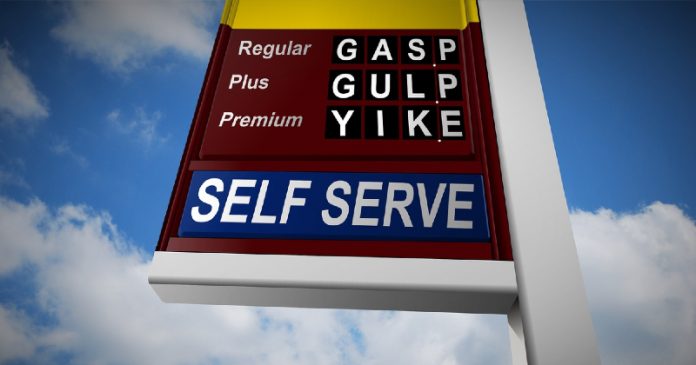
“To the oil and gas companies and to the finance firms that back them … Russia’s aggression is costing us all, and it’s no time for profiteering or price gouging.”
— President Joe Biden, March 8th, 2022
For a few hours in April 2020, Big Oil was on the brink of a reckoning. The price of crude fell below zero. Futures contracts for a barrel of West Texas Intermediate, the benchmark in the US, sank all the way to negative $38. For domestic shale drillers, already strapped from five years of low energy prices, the coronavirus pandemic might have forced widespread change. Instead, the companies successfully lobbied the Trump administration for a bailout that kept them afloat through 2020.
In 2021, the companies posted their highest profits in nearly a decade. They expect even higher returns in 2022.
Higher oil prices tell part of the story behind this remarkable reversal. The other key factor is so-called “capital discipline” — how the industry chooses to spend its money.
Leading up to the pandemic, a debt-driven wave of bankruptcies and quarterly losses had tarnished the industry’s credibility with investors. To reassure them, the industry adopted a new mindset: If forced to choose between producing more oil and gas, potentially lowering the price for consumers, or returning more money for their Wall Street investors, they would choose investors.
As the pandemic wound down, prices were going to rise no matter what, thanks to this new “capital discipline” (e.g. avoiding overproduction), plus an unexpectedly strong rebound in demand, and supply chain disruptions.
Then came the Russian invasion of Ukraine.
Big Oil’s voices in Washington — trade associations and friendly lawmakers — did not waste time trying to leverage this tragedy to their financial advantage. On the day the invasion began, the CEO of the American Petroleum Institute wrote the Biden administration with a public wish list, including faster approval for natural gas pipelines and export terminals and increased drilling on public lands and waters.
These policies, the letter claimed, would ensure “energy security” to support our allies — never mind that exports flow to those paying the highest prices, not necessarily our allies; that it will be years before these facilities come online; and that the companies are already hoarding leases and drilling permits in record amounts.
There is no magic wand the federal government can wave to immediately increase domestic production, which is already on track to hit an all-time high next year. Roughly 75% of US fossil fuels are extracted from private and state lands, and the industry already has over 8,800 approved but unused permits for drilling on federal lands.
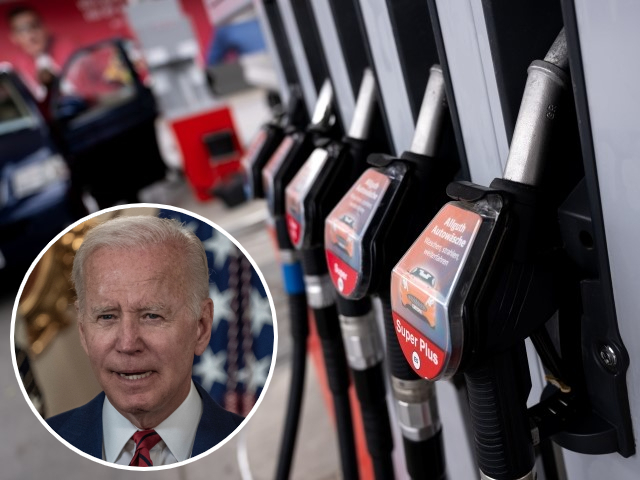
The Biden administration’s modest steps to delay additional leasing, giving time for climate analysis, have done little to slow drilling. The number of drilling permits issued on federal lands last year exceeded three out of four years of the Trump administration, according to federal data analyzed by Public Citizen. At last count, oil and gas companies have obtained nearly 38 million acres of public leases on lands and in waters, with 23.2 million acres or 61% of all leases sitting idle and unused.
The only way to protect families from fossil fuel price swings is to wean the economy off fossil fuels. That’s because regardless of what’s going on in the world, fossil fuel markets are inherently volatile.
On February 24th, 2022, the first day of the Russian invasion, the price for a barrel of WTI closed at $92.77. It spiked more than 35% just ten days later, before swooning back below $100 over the ensuing weeks. Some traders expect $200 a barrel crude later this year.
The first months of 2022 tell a remarkable story about what happens to the dollars consumers spend on runaway energy prices. The clearest narrators, if you know where to look, are the oil companies themselves.

In Their Own Words:
War, Energy Prices, and Share Buybacks
On Capitol Hill and in the press, fossil fuel lobbyists and corporate executives have blamed the Biden administration for the soaring price of oil and gasoline, falsely claiming that President Joe Biden’s policies have deterred domestic production.
Yet the same executives are telling investors and survey researchers with the Federal Reserve Bank of Dallas that “capital discipline” is the limiting factor. When they say this, they mean spending on buybacks and dividends — ways of returning cash to shareholders — are more important than increasing production to meet demand.
The majority (56%) of oil and gas executives responding to the Dallas Fed’s quarterly energy survey in March said publicly-traded companies are restraining production due to “investor pressure to maintain capital discipline… despite high oil prices.” The industry’s favorite scapegoats — government regulation and access to credit — both polled at less than 10%.
During the same period, oil companies announced their gangbuster financial results for the fourth quarter, and executives repeated those assurances on conference calls with investors and analysts.
Behind buzzwords — “capital discipline,” “shareholder return program” — they restate the same intention quarter after quarter: Postpone the energy transition, limit supply to keep prices high for regular Americans while drillers and Wall Street rake in the cash:
“We’ve spent the last decade consuming capital and now we’ve got a little bit of sunshine in us where we can return that capital to our investors that have been waiting patiently and sometimes impatiently for this return.”
— Diamondback Energy CEO Travis Stice, 2/23/22
To understand how stock buybacks benefit investors and insiders, it’s necessary to understand what stock really represents: A portion of the company’s expected future earnings. The fewer shares there are in investors’ hands, the more of those earnings each share is worth. When a company buys back and cancels 10% of its shares, that makes each share still held by an investor or insider worth 10% more. Spending money this way during a price shock allows companies to enrich shareholders silently, as well as the executives often paid in stock.
Earlier in February, before Diamondback’s earnings call, ConocoPhillips announced it was expanding an already-generous $7 billion shareholder payout program to $8 billion, leading a bank analyst on its call to ask if the move was based on high oil prices. CEO Ryan Lance replied that the company is indeed scrambling to return ballooning oil prices to investors:
“It’s a recognition of a strengthening commodity price market. And that’s a reflection of that strengthening since the December time frame when we announced our capital budget for the year,” Lance said.
Also in February, Devon Energy expanded a previously-announced $1 billion share repurchase plan by 60% to $1.6 billion. CEO Richard Muncrief explained the company had already used up more than half ($589 million) of the initial authorization in the final two months of 2021. “Given this favorable setup, we put our money where our mouth is,” he said.

Occidental Petroleum authorized a $3 billion share repurchase program on February 10, then two weeks later announced a 1,200% increase in its quarterly dividend, from $0.01 to $0.13. That happened on the day Russia invaded Ukraine after weeks of rising tensions.
CFO Rob Peterson attributed the company’s record free cash flow to “the strong performance of our business” and “a healthy commodity price.” He did not mention the various bailout benefits Occidental secured after lobbying Congress for help at the beginning of the pandemic.
The same profits-over-production logic prevailing at large independent drillers like ConocoPhillips, Devon and Occidental is on display at integrated supermajors like ExxonMobil, whose CEO Darren Woods declared in January the company is concerned “less about, you know, volume and volume targets and more about the quality and profitability of the barrels that we’re producing.”
Exxon’s turnaround has been among the most dramatic. After suspending its share repurchase program in 2016 to conserve cash and pay down debts, the company in January announced plans to buy back a whopping $10 billion of shares over the next 12 to 24 months.
Responding to an analyst request to narrow that time frame, CFO Kathy Mickells said higher energy prices would allow them to return the $10 billion faster: “I stand here today, I’d say increasing the pace with the faster end of that 12- to 24-month pace in mind. … but we’ll just have to see how the year pans out. But that’s how we’re thinking about it right now.”
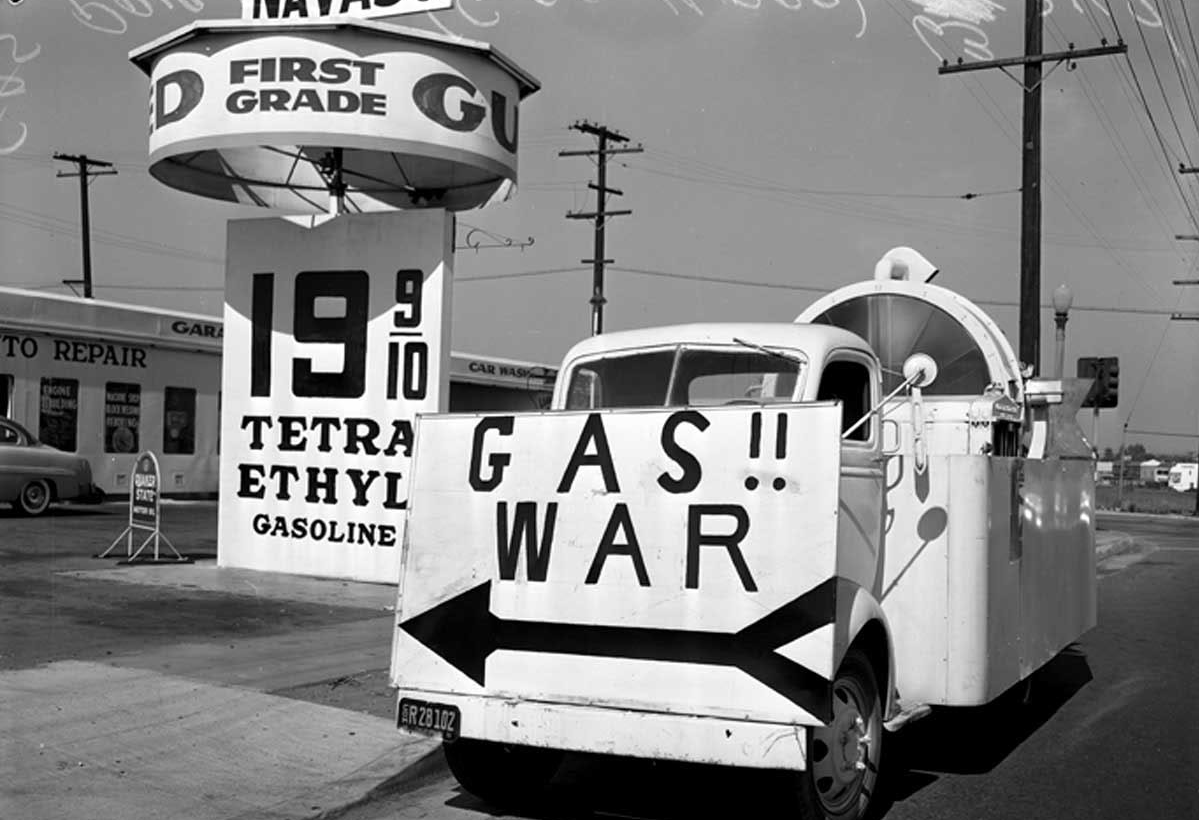
Using Dividends to Reward Shareholders While Times Are Good
Traditionally, publicly traded companies issue fixed dividends to shareholders on a quarterly basis that rise when business is good and shrink or get suspended when business is bad. In contrast, oil and gas companies have begun to experiment with supplemental or “variable” dividends, usually a set percentage of the company’s free cash flow.
Fossil fuel companies have long promised high dividends to their investors, insulating them from factors that make them less attractive as investments — most importantly, periods of unprofitability driven by volatile fuel prices. Variable dividends guarantee shareholders will benefit from high commodity prices, promising them excess cash that otherwise might be spent on drilling, emissions reductions, or other corporate expenses.
Perhaps the most generous was EOG, the driller formerly a division of Enron and known more recently for methane flaring against tribal wishes on sovereign Native American land, started sending special bonus cash payments — first a $1.00 per share payment declared in May 2021, then a $2.00 per share payment declared in November 2021, and finally another $1.00 declared in February 2022 — the day the Russian invasion began. In February 2021, only one of the top 20 companies (Devon Energy) had implemented a variable dividend. Four more companies joined it between August 2021 and February 2022, as oil prices rose: Conoco, Pioneer, Coterra, and Chesapeake. Pioneer and Coterra declared these extra dividends early because their cash flow was so strong.
These bonus payments amounted to $2.3 billion on top of the regular base dividend, based on EOG’s shares outstanding. Taken together, the six companies have announced plans to pay out $3 billion in special (variable or bonus) dividends since 2022 began.
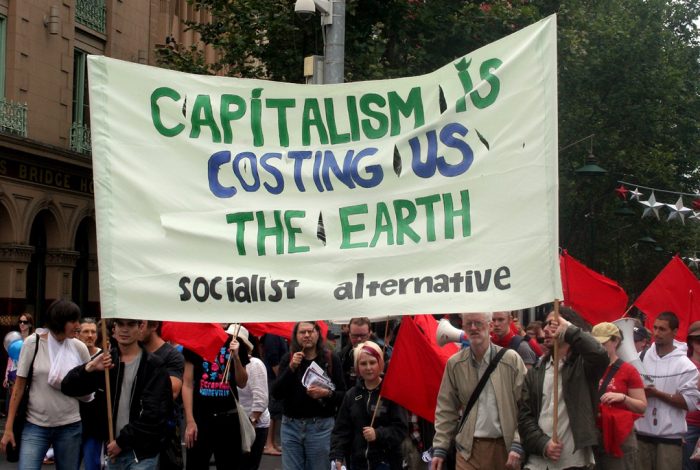
Big Oil and Disaster Capitalism
Several companies have baldly touted their intention to profit off the war via increased drilling and exports. The week before Russia’s invasion, the CEO of Coterra Energy, a new company created by the merger of shale drillers Cabot Oil and Cimarex, told investors: “Public policymakers in the United States and abroad are reexamining their energy policies in a manner that favors natural gas demand. We hope these good times last, but Coterra is prepared for whatever the future may bring.”
The market for exported US liquified natural gas (LNG) has exploded from virtually zero before 2015 to to 9.8 billion cubic feet per day in 2021 — a 50% increase year over year. In January of 2022, the US outstripped Qatar and Australia to become the largest exporter on the planet. Proposed LNG export terminals already permitted by the Federal Energy Regulatory Commission promise an additional 26 billion cubic feet per day in capacity.
No company is more associated with this trend than Cheniere, which recently boasted that it was responsible for freezing and shipping a full 7% of total US gas production. Speaking the day the Russian invasion began, CEO Jack Fusco said, “I mean, it’s tragic what’s going on in Eastern Europe… but if anything, these high prices, the volatility drive even more energy security and long-term contracting. So I would say that the fact that there’s a scarcity of LNG these days is driving more and more conversation on how to increase our infrastructure and secure monthly contracts for our European customers.”
Weeks later, Big Oil notched a major win in this pressure campaign. While enroute to Europe with the President, National Security Advisor Jake Sullivan saidthat LNG from the US had a role to play in ending the dominance of Russian gas: “I think you can expect that the US will look for ways to increase LNG supplies, surge LNG supplies to Europe not just over the course of years, but over the course of months as well.”
Two days later President Biden and the head of the European Commission jointly committed to an additional 15 billion cubic meters of LNG in 2022 alone from the US and other allies, “with expected increases going forward.”
Building additional import regasification facilities would take years and cost billions. Investing in renewables could eliminate Europe’s need for Russian gas by 2025.
The way LNG terminals operate makes them dangerous to the climate and to consumers. It takes an enormous amount of energy to freeze gas into a liquid for export, then regasify it at the other end — before even factoring in the massive amount of methane that leaks along the way.
The more gas the US exports, the tighter the domestic market becomes, increasing the risk of price spikes for heating and electricity, especially for low-income and communities of color who face higher barriers to accessing renewables and efficiency.
If fossil fuel executives exploit Biden’s pledge in Brussels to secure financing for another wave of LNG, billions will be sunk into assets that increase consumer costs and produce a fossil fuel dirtier than coal, resulting in massive financial losses as they become stranded by the energy transition.
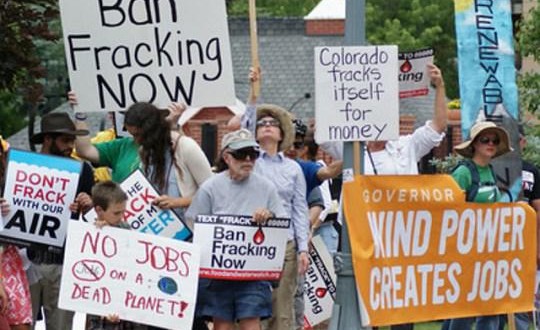
Conclusion
While prices remain high and the war continues, President Biden and lawmakers should focus on protecting consumers, supporting our allies with clean renewables, and preventing the runaway profiteering of Big Oil and Wall Street.
Recommendations:
- Protect consumers by passing a windfall profits tax. The US has used tax policy to deter harmful and unscrupulous profiteering since at least World War II. Senator Sheldon Whitehouse and Representative Ro Khanna have introduced legislation to tax the profits of price-gouging oil companies and refund the proceeds to consumers — not investors — on a quarterly basis. Modeled on the 1980 legislation that was law for most of the Reagan administration, it could return as much as $45 billion to consumers per year.
- Prevent Wall Street’s profiteering. Whether deployed by Big Oil or any other member of the Fortune 500, the argument for stock repurchases is weak. These programs ultimately enrich insiders and protect profits from being invested in workers or production. The stalled Build Back Better Act included a 1% excise tax on stock repurchases that would raise$124 billion in revenue over the next decade. Including this provision in future tax legislation would cut back on Wall Street speculation across our entire economy.
- Use executive authority to support European allies with renewables, not fossil fuels. Many of the investments Europe needs to break the dominance of Russian gas can be produced here in the US. President Biden should use his authority under the Defense Production Act to expedite the manufacturing of heat pumps and other green energy essentials.
War, Oil and Profit: A Timeline
| December 7, 2021 | President Biden threatens “strong economic and other measures” if Russia invades Ukraine. |
| January 26, 2022 | The US Ambassador in Moscow officially refuses to bar Ukraine from NATO, spurning Russia’s “security demands” from a month earlier. |
| February 2, 2022 | Marathon Petroleum announces a $5 billion increase in its existing share repurchase program. |
| February 3, 2022 | ConocoPhillips increases its expected return to shareholders by $1 billion from its December projection. |
| February 6, 2022 | US National Security Advisor Jake Sullivan declares that Russia could invade Ukraine “any day now.” |
| February 8, 2022 | Continental Resources increases its share repurchase program by 50% to $1.5 billion. |
| February 10, 2022 | Occidental authorizes repurchasing $3 billion in stock. |
| February 15, 2022 | Devon Energy boosts its share repurchase program by 60%, to $1.6 billion. |
| February 16, 2022 | Pioneer declares a variable dividend of $3.00 per share. |
| February 18, 2022 | z President Biden says he is “convinced” Russia is going to invade Ukraine.
z Diamondback announces a 20% increase to its quarterly dividend. |
| February 21, 2022 | Russia recognizes the provinces of Donetsk and Luhansk in eastern Ukraine. |
| February 23, 2022 | Coterra announces $1.25 billion in share repurchases. |
| February 24, 2022 | Russia invades Ukraine
Occidental announces a 1200% increase in its quarterly dividend, from $0.01 to $0.13 Ovintiv declares a dividend of $0.20 per share of its common stock, a 43% increase from the previous quarter EOG resources declares a special dividend of $1.00 per share. |
| March 8, 2022 | President Biden warns oil companies and their Wall Street backers that “it’s no time for profiteering and price gouging.” |
| March 23, 2022 | National Security Advisor Jake Sullivan contends that US LNG has a role to play in weaning Europe off of Russian gas and says the US is looking to “surge” LNG supplies to Europe “not just over the course of years, but over the course of months as well.” |
| March 25, 2022 | President Biden announces with European Commission President Ursula von der Leyen a commitment to increase LNG imports into Europe by 15 billion cubic meters in 2022 and teases “expected increases going forward.” |
DOWNLOAD THE FULL REPORT 12.3 MB
Public Citizen is a nonprofit consumer advocacy organization that champions the public interest in the halls of power. We defend democracy, resist corporate power and work to ensure that government works for the people – not for big corporations. Founded in 1971, we now have 500,000 members and supporters throughout the country.